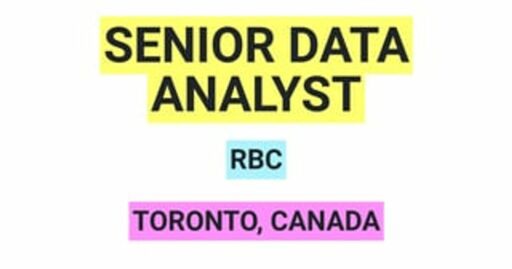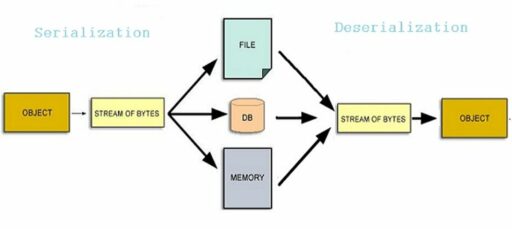Table of Contents
Advanced data collection methods are revolutionizing the way researchers gather information, enabling them to capture data more comprehensively and accurately than ever before. These new techniques leverage the latest technological advancements, from digital tracking to IoT devices, and are transforming the landscape of research. This article delves into the innovative approaches that are expanding the data collection toolkit, explores the intersection of data collection with cutting-edge technology, addresses the ethical implications, and looks ahead to the future of data collection in an ever-evolving digital world.
Key Takeaways
- Innovative data collection methods, such as digital tracking and IoT devices, provide real-time, accurate data for diverse research needs.
- Modern tools and platforms automate the data gathering process, enhance accuracy, and streamline analysis, making data collection more efficient.
- The integration of AI, machine learning, and blockchain technology into data collection processes ensures enhanced security and insightful analysis.
- Ethical considerations, including privacy, data protection, and regulatory compliance, are crucial in responsible data collection practices.
- The future of data collection will be shaped by technological advancements, predictive analytics, and the continuous adaptation to regulatory changes.
Innovative Techniques in Modern Data Collection

Digital Tracking and Big Data Analytics
In the realm of modern research, the advent of digital tracking and big data analytics has revolutionized the way data is collected and interpreted. Big data analytics involves the intricate process of sifting through vast amounts of data to discover valuable insights such as hidden patterns and market trends. This technique has become a cornerstone in strategic planning and decision-making for organizations, propelling innovation and enhancing operational efficiency.
The significance of data in the digital age is paramount, as it serves as the lifeblood of decision-making processes in various sectors. The value of data transcends its volume, encompassing the quality and the actionable insights it yields.
To effectively harness the power of big data, it is crucial to understand the different methods of data collection and their respective impacts. Below is a list of key considerations when implementing big data analytics:
- Ensuring the reliability and relevance of data sources
- Mastering data storage and management techniques
- Utilizing supervised and unsupervised learning for data interpretation
- Employing sophisticated data visualization tools like histograms and linear regression models
By integrating these practices, organizations can unlock the full potential of their data, leading to intelligent innovation and a competitive edge in the digital landscape.
Utilizing IoT Devices for Real-Time Data
The Internet of Things (IoT) has revolutionized the way we collect data, enabling a continuous stream of information from a myriad of devices. Real-time data collection through IoT devices offers unparalleled insights into various aspects of the physical world. For instance, in healthcare, wearable devices provide constant health monitoring, while smart home sensors can optimize energy consumption.
IoT devices are not limited to passive data collection; they can also actively control systems based on the data received. This dynamic interaction between data collection and system response is pivotal in automating and optimizing processes across industries.
The integration of IoT devices into data collection systems allows for immediate analysis and decision-making, which is critical in time-sensitive situations.
Here is a breakdown of common IoT data types:
- Sensor data: Includes GPS, temperature, or heart rate readings.
- Text data: Gathered from social media posts, product reviews, and other written materials.
- Image data: Information from visual sources like photographs and satellite images.
- Audio data: Compiled from audio sources such as voice recordings and environmental sounds.
Leveraging Mobile Technology for On-the-Go Insights
The ubiquity of smartphones and tablets has revolutionized the way data is collected, providing researchers with the ability to gather information in real-time as individuals interact with their devices. Mobile technology enables the capture of a wide variety of data types, from geolocation to user behavior, all while on the move. This mobility not only offers convenience but also enhances the richness of the data collected.
The integration of mobile technology into data collection strategies allows for a more dynamic and responsive approach to capturing insights.
Mobile apps, in particular, have become powerful tools for data collection. They can be designed to collect specific types of data or to engage users in surveys and other forms of feedback. Below is a list of common data points that mobile apps can collect:
- User demographics
- App usage statistics
- Location data
- Device motion and activity
- User-generated content
By leveraging these data points, organizations can drive innovation, enhance customer experience, and improve operational efficiency. The seamless integration of mobile technology into existing data collection pipelines ensures that the process is both agile and scalable.
Expanding the Data Collection Toolkit

Automation in Data Gathering
The advent of automation has revolutionized the way data is collected, offering unprecedented efficiency and consistency. Automated tools can perform repetitive tasks with remarkable accuracy, freeing researchers to focus on analysis and interpretation. This shift not only saves time but also reduces the potential for human error, ensuring a higher quality of data.
- Automated survey distribution and collection
- Real-time data capture from IoT devices
- Scheduled scraping of web data
Automation in data collection is not just about efficiency; it’s about enabling richer, more complex data ecosystems that can adapt and grow with research needs.
The table below showcases a comparison of manual versus automated data collection in terms of time spent on tasks:
| Task | Manual Time | Automated Time |
|---|---|---|
| Data Entry | 30 hours | 5 hours |
| Data Cleaning | 15 hours | 3 hours |
| Data Analysis | 20 hours | 10 hours |
By integrating automated tools into the data collection process, organizations can leverage the full potential of their data, driving insights that were previously out of reach.
Enhancing Accuracy with Advanced Tools
In the quest for precision, advanced tools are revolutionizing the way we approach data accuracy. Data Validation is a critical step, ensuring the integrity of data by cross-validating with other sources and applying range checks. Similarly, Data Transformation prepares data for analysis by converting it into a suitable format.
The following table illustrates the importance of accuracy in data collection, as reflected in a study on benchmark tasks:
| Task | Overall Accuracy |
|---|---|
| 1 | 65.43% |
Emphasizing accuracy in data collection not only enhances the quality of research but also builds a robust foundation for insightful analysis.
To further improve accuracy, it is essential to integrate advanced tools into the data collection process. These tools can automate validation and transformation steps, reducing the potential for human error and increasing the efficiency of data handling.
Streamlining Data Analysis with Sophisticated Platforms
In the realm of data analysis, the use of sophisticated platforms has become a cornerstone for businesses aiming to gain a competitive edge. These platforms enable the seamless integration of various data sources, enhancing the efficiency of data exploration and visualization. With tools like Microsoft Power BI, QlikView, and Tableau, analysts can transform raw data into actionable insights more rapidly than ever before.
The following table outlines some of the key tools available for data exploration and their functionalities:
| Tool | Functionality |
|---|---|
| Microsoft Power BI | Data visualization, business intelligence |
| QlikView | Data integration, analytics |
| SAS | Advanced analytics, data management |
| Splunk | Data search, monitoring, analysis |
| Tableau | Interactive data visualization |
The ability to conduct exploratory data analysis (EDA) is crucial for understanding performance metrics and creating a narrative around the data. EDA helps in identifying data quality, spotting trends, and uncovering potential issues.
Moreover, the incorporation of generative AI into these platforms is revolutionizing predictive analytics, allowing data teams to forecast trends with unprecedented accuracy. As the landscape of data analysis tools continues to evolve, staying informed about the latest advancements is essential for any organization looking to leverage data for strategic decision-making.
The Intersection of Data Collection and Technology

Artificial Intelligence and Machine Learning
The integration of Artificial Intelligence (AI) and Machine Learning (ML) into data collection processes marks a significant leap forward in research capabilities. These technologies enable the analysis of vast datasets with unprecedented speed and accuracy, leading to more informed decision-making.
AI and ML are not just transforming the way data is analyzed; they are revolutionizing the very nature of data collection itself. By automating the extraction of insights from data, researchers can focus on higher-level analysis and strategy.
The adoption of AI and ML spans various sectors, reflecting the widespread acceptance of AI technologies. From agriculture to healthcare and beyond, these tools are reshaping industries by providing deeper insights and predictive capabilities. Here’s a glimpse of how AI is being embraced across different fields:
- Agriculture: Enhancing crop yield predictions
- Manufacturing: Optimizing production processes
- Health: Improving diagnostic accuracy
- Education: Personalizing learning experiences
- Transportation: Advancing autonomous vehicle technology
- Social Media: Tailoring content delivery
As we continue to explore the potential of AI and ML in data collection, it is crucial to address the challenges and opportunities they present. The balance between automation and human oversight remains a key consideration in ensuring the integrity and utility of collected data.
Blockchain for Secure and Transparent Data Collection
The integration of blockchain technology into data collection processes marks a significant advancement in ensuring data integrity and transparency. Blockchain’s decentralized nature makes it an ideal platform for secure data storage and management. By creating an immutable ledger of transactions, blockchain provides a verifiable and tamper-proof record-keeping system.
- Benefits of Blockchain in Data Collection:
- Enhanced security against data breaches
- Increased transparency for stakeholders
- Reduced risk of data tampering
- Streamlined verification processes
Blockchain-based data storage solutions can enable universities to create a more secure, inclusive and collaborative future for research and education.
As organizations seek to harness the power of blockchain, they must consider the balance between innovation and practicality. Implementing blockchain solutions requires careful planning and a clear understanding of the technology’s capabilities and limitations. The future of data collection will likely see blockchain as a cornerstone for secure and transparent data management practices.
The Role of Cloud Computing in Data Storage and Access
Cloud computing has revolutionized the way organizations manage and access their data. The scalability and flexibility offered by cloud services make them an ideal choice for businesses of all sizes. With cloud storage, data can be accessed from anywhere, at any time, providing a level of convenience and efficiency that traditional on-premises solutions cannot match.
The decision to use cloud-based storage is often driven by the need for cost-effective solutions that can handle the increasing volume of data. Here’s a brief comparison of cloud and on-premises databases:
| Feature | Cloud Database | On-Premises Database |
|---|---|---|
| Accessibility | Anywhere, anytime | Location-dependent |
| Scalability | High | Limited |
| Cost | Variable, pay-as-you-go | High upfront investment |
| Maintenance | Managed by provider | Managed by organization |
Cloud computing not only provides a platform for storing data but also ensures that data management practices are streamlined. This includes structuring data, establishing governance, and maintaining data quality and recovery processes.
The integration of cloud computing in data storage and access is essential for efficient data management in organizations. It supports various business operations and enables data scientists to perform complex data analysis with ease.
Ethical Considerations in Data Collection

Ensuring Privacy and Data Protection
In the realm of advanced data collection, ensuring privacy and data protection is paramount. Organizations are tasked with the responsibility of not only collecting data but also safeguarding the personal information of individuals. This involves a commitment to ethical data practices that prioritize the rights and expectations of data subjects.
- Data-collecting methods should be documented for transparency.
- Data governance is crucial for accountability and control.
- Secure backup and saving of data is a must.
- Establishing data lifecycle management and data retention policies.
- Regular review and modification of data management procedures.
The balance between data utility and data privacy is delicate and requires a robust framework that addresses legal and ethical requirements. Adherence to principles such as lawfulness, fairness, and transparency is not just a regulatory mandate but a cornerstone of trust in the data ecosystem.
Navigating Regulatory Landscapes
In the realm of data collection, navigating regulatory landscapes is a complex task that requires a deep understanding of various legal frameworks across different jurisdictions. Researchers and organizations must stay abreast of the ever-changing regulations to ensure ethical and legal compliance.
- Awareness of local and international data protection laws
- Understanding the implications of cross-border data transfer
- Keeping up-to-date with industry-specific regulations
- Adapting to new regulatory developments in a timely manner
The dynamic nature of regulatory landscapes demands continuous monitoring and adaptation to maintain compliance and protect the interests of data subjects.
The challenge is not only to adhere to current standards but also to anticipate future changes that may impact data collection practices. Stakeholders must engage in meaningful dialog to align technology’s evolution with societal values and needs, ensuring that data processing is fair to all the data subjects involved.
Building Trust through Ethical Data Practices
In the realm of data collection, trust is the cornerstone of consumer relationships. Ethical practices are not just a regulatory requirement but a strategic asset. Organizations that prioritize ethics in data collection are likely to see enhanced consumer loyalty and brand reputation.
To ensure ethical data handling, a set of best practices should be adopted:
- Transparency in data collection methods and usage.
- Obtaining explicit consent from individuals before gathering their data.
- Implementing robust data protection measures to safeguard personal information.
- Regularly reviewing and updating data management procedures.
By embedding ethical considerations into their operations, companies can navigate the complexities of data privacy and security with greater confidence and accountability.
It is crucial to document data-collecting methods and establish clear data governance for accountability. Structuring data and ensuring its quality, while also preparing for data backup and recovery, are vital steps in maintaining the integrity and availability of collected data.
The Future of Data Collection

Predictive Analytics and Proactive Data Gathering
The evolution of predictive analytics has transformed the landscape of data collection, shifting the focus from reactive to proactive strategies. By leveraging advanced algorithms and machine learning techniques, organizations can anticipate trends and behaviors, enabling them to make informed decisions ahead of time.
The key to harnessing the power of predictive analytics lies in the effective integration and management of diverse data sources.
To facilitate this, a variety of tools are available that support the integration of disparate data sources for enhanced predictive insights. Here’s a succinct list of some popular tools:
- Microsoft Power BI
- QlikView
- SAS
- Splunk
- Tableau
Open source alternatives also play a crucial role, offering functionalities such as regression analysis, data profiling, and visualization:
- Knime Analytics Platform
- OpenRefine
- NodeXL
- Plotly
These tools are instrumental in uncovering the hidden value in data, which can lead to improved predictive modeling and strategic decision-making.
Adapting to Evolving Technological Trends
As the landscape of technology continues to shift, researchers and organizations must remain agile to keep pace with new developments. Adapting to evolving technological trends is not just about adopting the latest tools, but also about understanding the broader implications of these changes on data collection methods.
- Periodic surveys to update and refine technology adoption measures.
- Consideration of socio-economic disparities in technology acceptance.
- Aligning technological evolution with societal values and needs.
The challenge lies in balancing the rapid pace of technological innovation with the need to maintain ethical standards and ensure data relevance.
The acceptance of AI technologies and other advancements requires a nuanced approach that accounts for varying levels of trust and security perceptions across different income groups. This understanding is crucial for creating a more inclusive future where the benefits of technology are accessible to all.
The Impact of Regulatory Changes on Data Collection Methods
Regulatory changes are a significant driver in the evolution of data collection methods. As laws and guidelines evolve, organizations must adapt their practices to ensure compliance. The introduction of new regulations often necessitates a shift towards more transparent and accountable data practices.
One of the key aspects of recent regulatory changes is the emphasis on data minimization. This principle dictates that only the data necessary for a specific purpose should be collected, reducing the risk of data breaches and misuse. The repercussions of non-compliance with these regulations can be severe, including hefty fines and reputational damage.
To illustrate the importance of adapting to regulatory changes, consider the following points:
- Organizations must stay informed about changes in data protection laws.
- Implementing data minimization strategies is crucial for compliance.
- Regular audits and updates to data policies can help mitigate risks.
By proactively adapting to regulatory changes, organizations can not only avoid penalties but also gain a competitive edge by building trust with consumers and enhancing data security.
CONCLUSION
In the realm of research, advanced data collection methods are pivotal in shaping the quality and depth of insights we derive. Throughout this article, we have explored a spectrum of innovative techniques that extend beyond traditional surveys and interviews, delving into the world of digital tracking, sensors, and sophisticated analytics platforms. The future of data collection is undeniably intertwined with technological progress, from IoT devices to AI and machine learning enhancements. As we continue to expand our data collection toolkit, it is imperative to select methods and tools that align with our research objectives, ensuring ethical practices and the integrity of our findings. The evolution of data collection is an ongoing journey, one that promises to refine our understanding of the world and empower decision-making processes across various domains.
Frequently Asked Questions
What are some advanced techniques in modern data collection?
Advanced techniques in modern data collection include digital tracking, big data analytics, the use of IoT (Internet of Things) devices for real-time data capture, and leveraging mobile technology to gather insights on the go.
How can automation enhance data collection efforts?
Automation can significantly enhance data collection by reducing manual effort, increasing the speed and accuracy of data gathering, and enabling the continuous collection of data without the need for constant supervision.
What role does artificial intelligence play in data collection?
Artificial intelligence (AI) plays a pivotal role in data collection by enabling the processing and analysis of large datasets, predicting trends, and providing deeper insights through machine learning algorithms.
Why is blockchain technology important for data collection?
Blockchain technology provides a secure and transparent way to collect and store data. It ensures data integrity and trustworthiness by creating an immutable ledger of transactions that can be verified by all parties involved.
What are the ethical considerations in data collection?
Ethical considerations in data collection include ensuring privacy and data protection for individuals, complying with regulatory requirements, and adopting practices that build trust and transparency with data subjects.
How is the future of data collection likely to evolve?
The future of data collection is expected to evolve with advancements in predictive analytics, AI, and regulatory changes. These developments will lead to more proactive data gathering methods and a need for organizations to adapt to new technologies and privacy laws.





